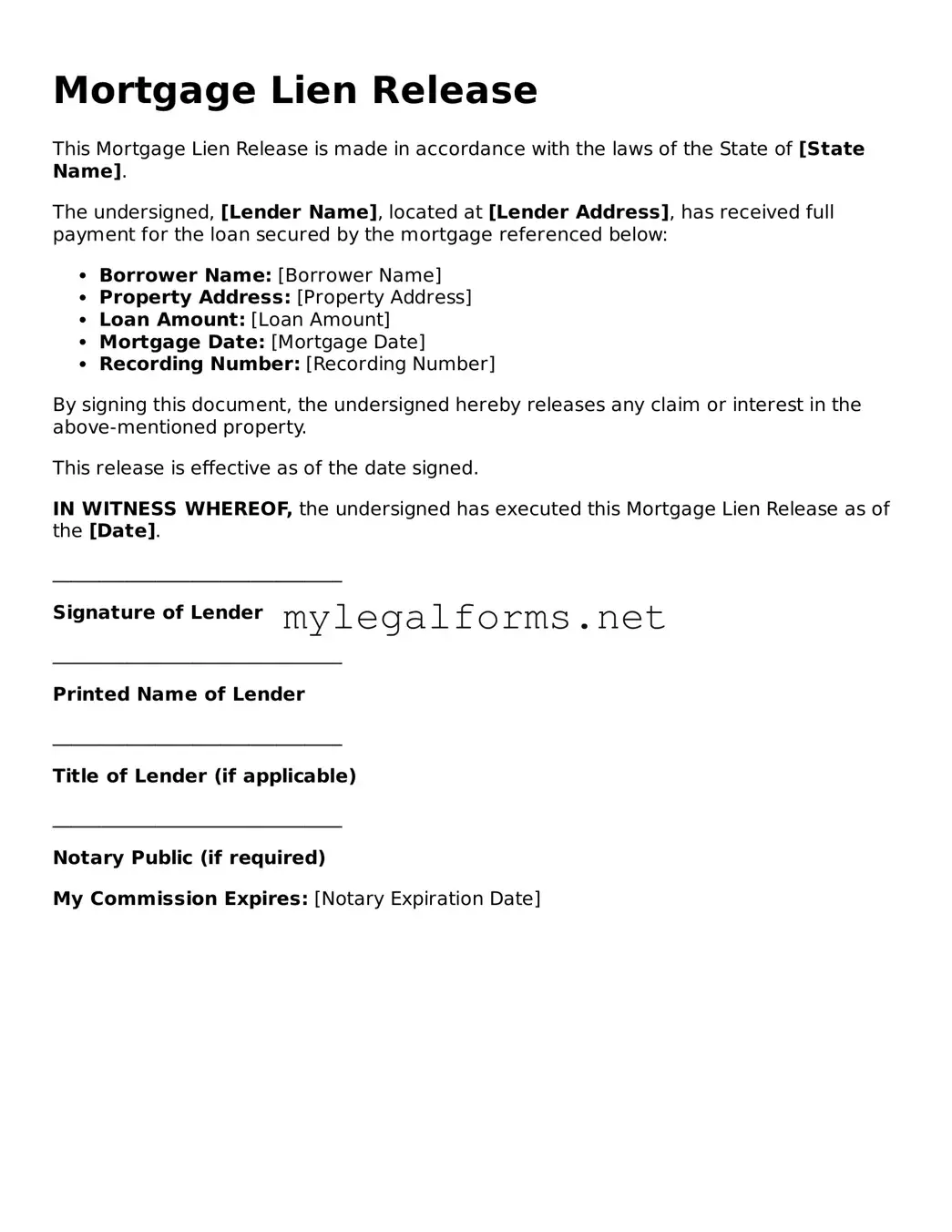Mortgage Lien Release
This Mortgage Lien Release is made in accordance with the laws of the State of [State Name].
The undersigned, [Lender Name], located at [Lender Address], has received full payment for the loan secured by the mortgage referenced below:
- Borrower Name: [Borrower Name]
- Property Address: [Property Address]
- Loan Amount: [Loan Amount]
- Mortgage Date: [Mortgage Date]
- Recording Number: [Recording Number]
By signing this document, the undersigned hereby releases any claim or interest in the above-mentioned property.
This release is effective as of the date signed.
IN WITNESS WHEREOF, the undersigned has executed this Mortgage Lien Release as of the [Date].
_______________________________
Signature of Lender
_______________________________
Printed Name of Lender
_______________________________
Title of Lender (if applicable)
_______________________________
Notary Public (if required)
My Commission Expires: [Notary Expiration Date]
